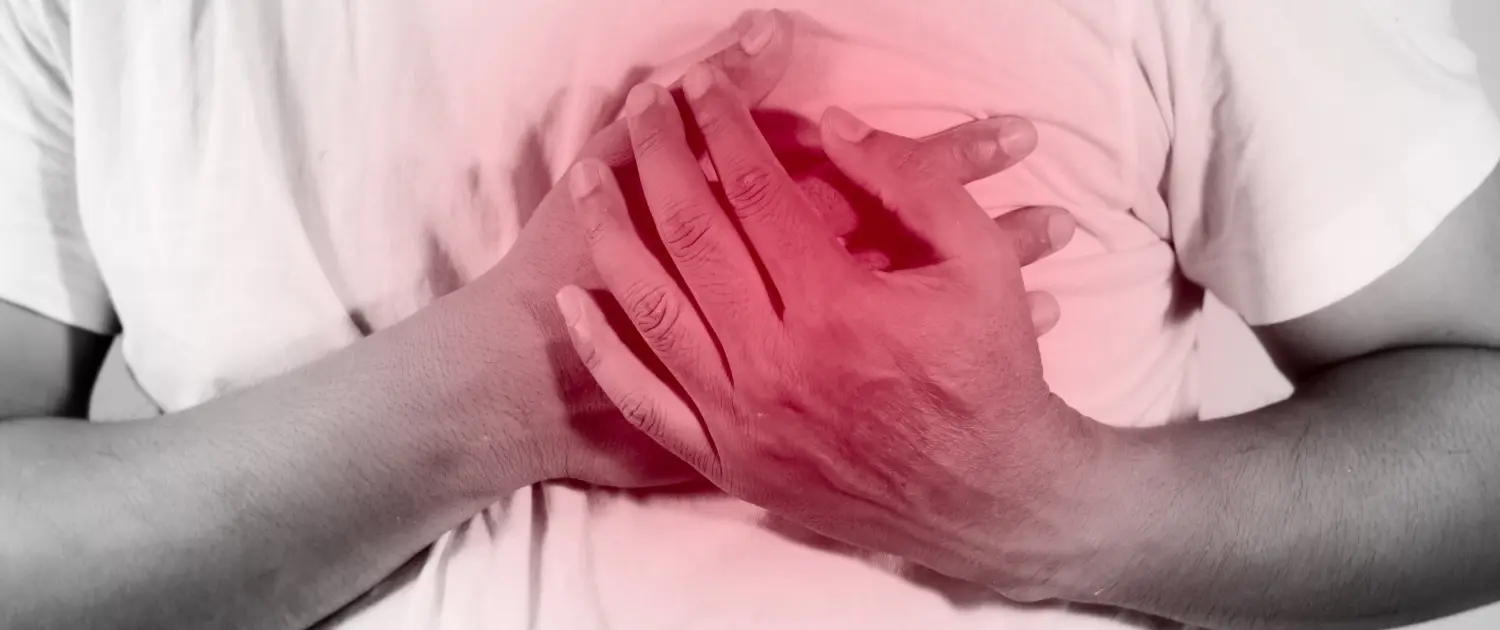What is Crimean Congo Hemorrhagic Fever (CCHF)? What are the Symptoms?
Crimean-Congo hemorrhagic fever (CCHF) is a disease usually spread by ticks. In later stages, the disease can cause large areas of bruising, intense nosebleeds or uncontrollable bleeding from injections. Crimean-Congo hemorrhagic fever was first discovered in Crimea in 1944 and then in Congo in 1969. Today, the disease is found in Eastern Europe, Southern Europe, along the Mediterranean, Northwest China, Central Europe. In addition to tick bites, contact with the blood or tissues of infected animals can also transmit the disease. The condition starts with flu-like symptoms such as fever, headache, muscle aches, nausea, vomiting and over time can lead to severe bleeding and organ failure. Early diagnosis is important for the treatment of Crimean-Congo hemorrhagic fever and the disease can be fatal if left untreated.

What is Crimean Congo Hemorrhagic Fever?
This is a disease that causes outbreaks of severe viral hemorrhagic fever. The virus is primarily transmitted to humans from ticks and livestock. In some cases, human-to-human transmission can occur. Transmission between humans can occur through close contact with the blood or other body fluids and secretions of infected persons. There is no vaccine for humans or animals. Crimean congo can be transmitted through tick bites, as well as through contact with infected animal blood or tissues during slaughter. Cases are usually more common in people working in the livestock sector. Hospital-acquired infections can also be caused by improper use and sterilization of medical equipment used in diagnosis and treatment.
What are the Symptoms of Crimean Congo Hemorrhagic Fever?
Symptoms of Crimean-Congo hemorrhagic fever can last for different periods of time depending on the type of infection. The incubation period of CCHF after tick bite infection is usually 1 to 3 days. It can last up to a maximum of 9 days. The incubation period after contact with infected blood or tissues is about 5 to 6 days and can last up to 13 days. Crimean congo symptoms develop rapidly. Often, it starts with non-specific febrile symptoms and progresses to hemorrhagic syndrome. The infection typically goes through four stages. These periods can be classified as incubation, pre-bleeding, hemorrhagic and recovery. Some of the common first symptoms may include
- Headache
- Dizziness
- High fever
- Back and neck pain
- Joint pain
- Muscle aches
- Abdominal pain
- Vomiting
- Diarrhea
- Red or painful eyes
- Photophobia (sensitivity to light)
- Red face
- Sore throat
- Red spots on the roof of the mouth and throat
Some people may also have jaundice. In severe cases of CCHF, mood changes, changes in sensory perception and confusion may occur. People may feel sleepy and depressed. Due to liver enlargement (hepatomegaly), stomach pain may move to the upper right side. As the disease progresses, the symptoms of Crimean-Congo hemorrhagic fever may change. In addition to the initial symptoms, the following symptoms may be observed:
- Large areas with severe bruising
- Severe nosebleeds
- Uncontrolled bleeding from injections
- Rapid deterioration of the kidneys,
- Sudden liver failure
- Lung failure
Crimean-Congo hemorrhagic fever can progress rapidly and can be life-threatening. It is therefore important to seek medical help immediately when symptoms of the disease are noticed.
What Causes Crimean Congo Fever?
The main cause of the disease is a nairovirusfrom the bunyaviridae family. Infected animals are usually asymptomatic, while infection in humans is often life-threatening. CCHF can infect a wide range of wild and domestic animals without causing disease. However, the virus is usually carried by ticks and is transmitted to humans through tick bites. It can also be transmitted to humans through contact with the blood or tissues of infected animals. Especially those in contact with vectors, such as farm animals, are at risk.
How is Crimean-Congo hemorrhagic fever treated?
The main approach to the treatment of Crimean-Congo hemorrhagic fever (CCHF) is symptom control and general supportive care. It can be significantly improved with early detection and appropriate intervention. Early diagnosis and supportive care in the form of blood, platelet and plasma replacement can be life-saving, especially in patients with hemorrhagic symptoms. It is also important to monitor patients regularly and evaluate their response to treatment. The patient’s condition should be closely monitored throughout the treatment process. Treatment for Crimean-Congo hemorrhagic fever may include
- Symptomatic Treatment: Symptomatic medications such as painkillers, antipyretics and antiemetics are used to relieve the patient’s symptoms.
- Antiviral Treatment: In some cases, antiviral drugs may be used. However, more research is needed on the effectiveness and appropriate use of antiviral drugs.
- Fluid Support: Correction of electrolyte abnormalities is important. Intravenous fluids are given to the patient to maintain fluid and electrolyte balance. This reduces the risk of dehydration and supports kidney function.
- Bleeding Control: Platelet transfusions may be given to reduce the risk of bleeding. This improves blood clotting and prevents bleeding complications.
- Intensive Care and Supportive Treatments: If the disease is severe, treatment in an intensive care unit may be required. Respiratory support, blood transfusions, kidney support and other supportive measures may be taken.
In addition to treatment, it is very important to be aware of the disease. The mainstay of prevention and control of CCHF viral infection should be targeted at both community and hospital settings. At the community level, care should be taken to prevent human contact with livestock and minimize the tick burden on these vertebrate hosts.
Precautions should be taken to prevent tick bites, such as avoiding tick habitats, regularly inspecting clothing and skin for ticks, and using tick repellents. Fully covered clothing is recommended to prevent the tick from attaching to body parts. Basic contamination and hygiene measures are essential in patient care. Precautions include isolation and the use of protective equipment such as gloves, aprons, face shields and goggles with side shields.
Stages of Crimean Congo Hemorrhagic Fever
CCHF is a febrile illness that can progress to a serious and often fatal hemorrhagic disease. The stages of Crimean-Congo hemorrhagic fever can indicate four different conditions in people. These are the incubation, pre-bleeding, hemorrhagic and recovery periods.
Incubation period The incubation period after infection through a tick bite is usually short and ranges from 1 to 5 days on average. The incubation period after contact with infected blood or tissues is usually 5 to 6 days, with a maximum known duration of 13 days.
First stage (febrile): In the first stage, bleeding symptoms have not yet appeared, but the symptoms of the viral infection become apparent. Flu-like symptoms such as flushing of the face and pharynx, fever, headache, muscle and joint pains, nausea, vomiting, weakness and a rash that progresses to hemoptysis are usually observed.
Hemorrhagic stage The hemorrhagic stage is usually 3 to 5 days after the onset of the disease. days and is usually short, lasting on average 2 to 3 days. This is the stage when the severity of the disease increases and bleeding occurs. In addition to internal bleeding in the abdominal muscles, bleeding from the brain, bleeding gums, nose, vagina, uterus or urinary tract can also occur. Cerebral hemorrhage and massive liver necrosis indicate a poor prognosis. Subcutaneous bruising may also occur.
Recovery or organ failure: Some patients recover, while in others the disease can result in serious complications. Patients with serious complications may suffer from liver failure, kidney failure and respiratory problems. In such cases, intensive care treatment may be required and the risk to life may increase.

How is Crimean-Congo hemorrhagic fever transmitted?
People can get CCHF from the bites of virus-carrying Hyalomma ticks or by touching the blood or body parts of infected ticks, animals or sick people. Once infected, people can become a focus of transmission. Transmission can sometimes occur in hospitals if patients’ blood, tissues, body fluids and secretions are touched or if medical instruments are not properly cleaned.
Can Crimean Congo Hemorrhagic Fever Kill?
The condition can be significantly improved with early detection and appropriate intervention. However, without early diagnosis and appropriate treatment, the disease carries a serious risk to life. That is why it is so important to seek medical attention immediately when symptoms of Crimean-Congo hemorrhagic fever are recognized.
Where is Crimean-Congo hemorrhagic fever seen in Turkey?
The disease was first definitively diagnosed in Turkey in 2003. Cases of Crimean-Congo Hemorrhagic Fever, which were first seen in and around Tokat province, are mostly concentrated in the north of Central Anatolia, the Central Black Sea region and the north of Eastern Anatolia.
Crimean Congo Hemorrhagic Fever is a serious viral disease usually transmitted by a tick bite. Without early diagnosis and treatment, it can be life-threatening. This is why people with symptoms of the disease should immediately go to hospital for medical attention.




